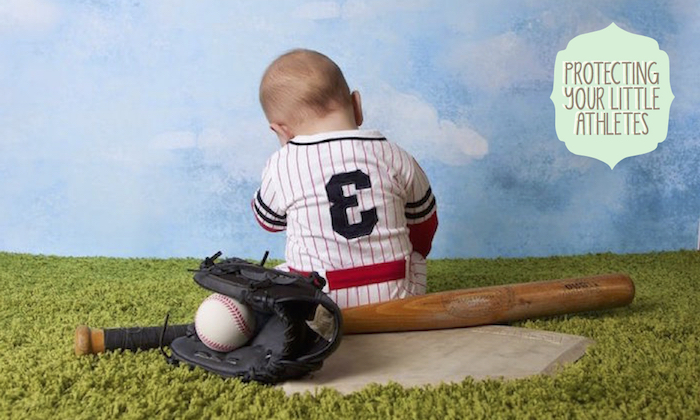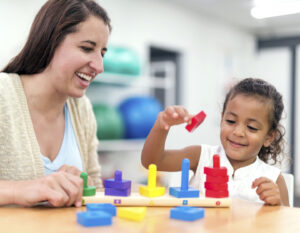

Concussions are a common occurrence in youth sports. Know how to protect your little athletes.
Anyone who watches sports regularly will know that one of the hottest topics in recent years is the regular occurrence of concussions. In the past, it was quite common to “get your bell rung” on the field and return for the next play. Many of my classmates were ex-junior hockey players. It was a badge of honour to “man up” and continue, even after temporarily blacking out from a vicious body check. One classmate told me that he was so dizzy from a collision that he vomitted on the bench before hopping back on the ice for the next shift!
With all the recent studies on head traumas, we now know that this macho attitude can lead to serious, sometimes fatal consequences down the road. Again and again we hear about retired pro football players or wrestlers committing suicide from depression. Much of this can be attributed to the years of violent hits taken on the field resulting in irreversible damage to the brain. In fact, even basketball superstar Lebron James has publicly stated that he would never allow his son to play American football. As a parent with two young children active in sports, I can relate to King James’ concern. A child’s brain is still growing and forming new neuronal connections or synapses. Any disruption to these vital processes can have harmful effects on long-term cognitive development and function.
What Is A Concussion?
A concussion is a type of traumatic injury to the brain. The brain sits inside the hard skull, floating in a suspension of surrounding cerebral spinal fluid. When the head experiences a large outside force, the brain can collide with the hard inner skull. This can cause damage to the neurons (brain cells) and blood vessels resulting in a concussion. The youth sports with the highest rates of concussions include: lacrosse, ice hockey, American football, wrestling and soccer. Concussion rates have steadily increased over the past decade. Many believe this is due to increased awareness and improved recognition of these injuries.
Signs and Symptoms.
Many concussions do not involve a total loss of consciousness. The symptoms can be varied. Do not assume that because a blackout did not occur, the injury should be ignored.
If your child experiences any of the following symptoms, it is strongly recommended that they be taken to the hospital emergency ward: • loss of consciousness/blackout • slurring of speech • blurry vision or other visual problems • sensitivity to light or noise • poor coordination or balance • difficulty walking • severe headache especially one that gets worse • confused actions or speaking nonsensically • nausea or vomitting • dizziness
It is extremely important to know that concussion symptoms often do not present until up to three days later. In children, certain less obvious symptoms may also including increased irritability, frustration or sleep issues. Parents must be very vigilant and err on the side of caution when it comes to head injuries.
Treatment
If the doctor has determined that hospitalisation is not needed, he/she may recommend several forms of treatment depending on the individual case. It is imperative that the child gets both physical and mental rest. Experts recommend that the child take at least one week off of school to recuperate. Physical rest involves stopping all sports and other physical activities until the injury has fully healed. Children should only perform the minimal activities of daily life. This reduces the risk of another head injury or fall. Mental rest means avoiding any cognitive activities such as computer and cell phone use, homework, reading, television or video gaming. If these activities do not exacerbate the symptoms they can be gradually reinstated. Avoid loud environments and bright lights as they can aggravate symptoms.
Most healthy kids can return to regular activities within a few weeks but ultimately it’s the doctor’s recommendation that is most important. It is essential that the child has fully recovered before returning to sports. A premature rush back to competition increases the chance of a serious condition called Second Impact Syndrome. This is a rare condition that happens when a second concussion occurs before the initial concussion has fully resolved. It can lead to permanent brain damage, even death.
Prevention
It is almost impossible to prevent concussions. But we can lower the risk by taking some precautions. Protective headgear, visors and mouth guards should be used whenever possible. Full contact sports such as American football and hockey should not allow hitting until physical maturity. Encouraging fair play and good sportsmanship may help to minimize unnecessary aggression on the field. Learning proper technique for the sport being played will also help lower injury risk. Playing fields should be thoroughly inspected for uneven surfaces or holes. Ensure that goal posts have appropriate surrounding padding. Incorporating neck strengthening exercises to the training regimen is also a good idea. Stronger neck musculature may help to cushion the head in the event of a jarring force.
Changing The Culture
The “win at all costs” culture of sports affects the self-reporting of concussion symptoms as well as the compliance with return-to-play advice from doctors. Children, their teammates, parents and coaches may not be fully aware of the serious health threats posed by concussions. Athletes may feel that they are letting everyone down by sitting out. Sacrificing oneself for the benefit of the team has always been a theme with all sports. The “no pain, no gain” mantra is still very much present in todays athletic culture. Heroic images of Tiger Woods winning the 2008 US Open with a torn knee tendon or Michael Jordan playing with the flu in Game 5 of the 1997 NBA Finals inspire youth to follow in the footsteps of their idols and “suck it up”. Overcoming this mentality takes leadership from coaches and parents. It is crucial that the child understands that their health is of paramount importance, taking precedence over any competition. Children must be reminded that there is no shame to being hurt and that even the greatest athletes in the world regularly miss games due to injuries.
 View All
View All











 View All
View All





 View All
View All


 View All
View All












